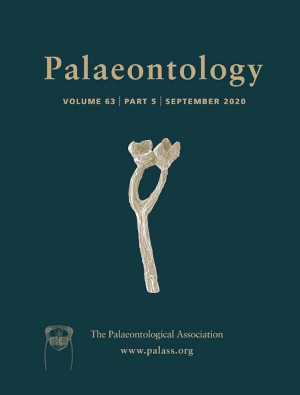Reg. Charity No. 1168330

A macroalgal holdfast (root‐like structure) anchored or grown into sediments is a key trait of metaphytes and eukaryotic algae. Various patterns and taphonomic variants of congeneric holdfasts are preserved on the bedding planes of black shales of the Ediacaran Wenghui biota in South China. The macroalgal holdfast, which commonly consists of a rhizome, rhizoid and pith (perhaps mechanical tissue), can be morphologically classified into ten types within four groups of rhizomes: bare rhizome holdfasts (Grypania, Tongrenphyton and Sectoralga‐type holdfasts), canopy rhizome holdfasts (Gemmaphyton, Gesinella, Discusphyton and Baculiphyca‐type holdfasts), pithy rhizome holdfasts (Zhongbaodaophyton and pithy‐cone‐type holdfasts) and differentiated rhizome holdfasts (Wenghuiphyton‐type holdfasts). Analysis of the Precambrian macroalgal record indicates that rhizomes played a more important role in the evolution of macroalgal holdfast than rhizoids. The following evolutionary stages of development of macroalgal holdfasts are proposed: (1) growth of the basal thallus into sediments (Grypania‐type holdfast); (2) development of a primitive (indistinct) rhizome from the base of a stipe or thallus (Tongrenphyton‐type and Sectoralga‐type holdfasts); (3) growth of a distinct rhizome with rhizoid (Gemmaphyton‐type, Gesinella‐type and Discusphyton‐type holdfasts); (4) development of a pith in the stipe (Baculiphyca‐type holdfast); (5) pith extension into the rhizome (Zhongbaodaophyton‐type and pithy‐cone‐type holdfasts); and (6) rhizome differentiation and development of a complex holdfast system (Wenghuiphyton‐type holdfast).
AcknowledgementsThis research was supported by the National Science Foundation of China (Grant. 41762001 and 41763006) and the Guizhou Science and Technology Project (No. 2017‐5788). We thank Dr Santosh K. Pandey, Duncan McIlroy and Sally Thomas for constructive reviews and comments that significantly improved this paper. We are grateful to Dr Gangqing Jiang (University of Nevada Las Vegas, USA) for additionally checking the revised manuscript.